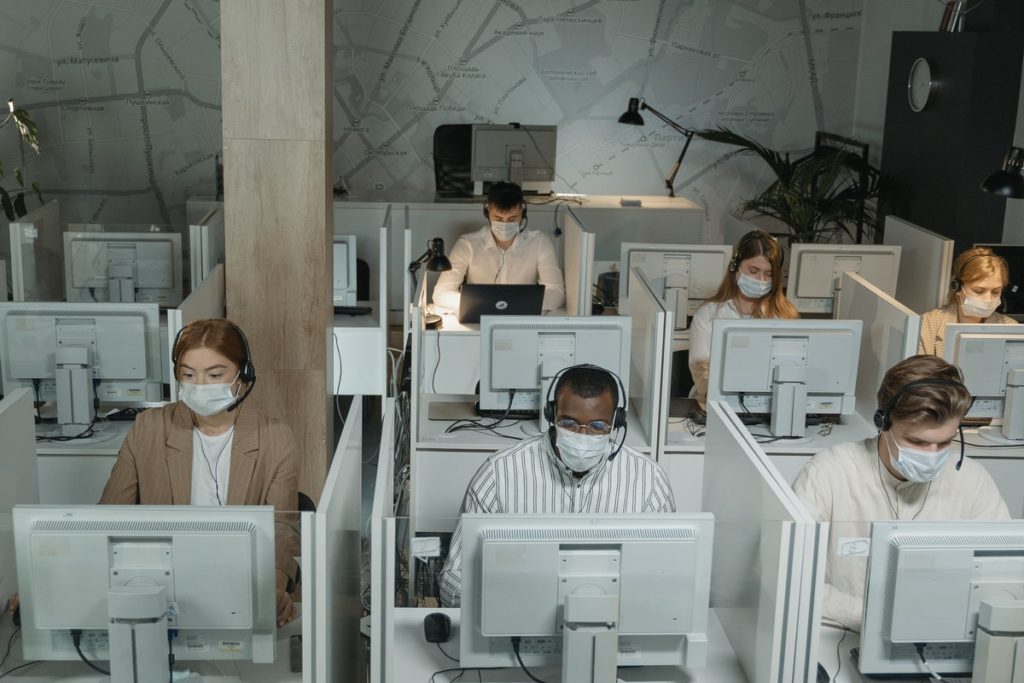Studies show that the COVID-19 crisis has changed how Americans work in various ways. For one, most workers transitioned to a work-from-home setup to varying degrees of productivity and results. For another, those who remained in the office also had to find ways to keep themselves and each other safe and healthy by curbing infections as much as possible.
But no matter how careful we are, infections can be inevitable sometimes since the virus is an invisible enemy that can transmit easily, especially with the new variants. If your company has gone back to the traditional setup and you’ve recently suffered a COVID-19 outbreak, a thorough clean-up is necessary. Here are some key tips for disinfecting and sanitizing your office.
Stock up on the right products
Here are some tips on the kind of cleaning products you need:
- Avoid products with harmful chemicals. The American Lung Association (ALA) warns that many of the hospital-grade cleaning products we find in supermarkets contain chemicals that can irritate our throats and eyes and even cause serious health problems like cancer. Those products often release dangerous chemicals like volatile organic compounds. The worst part is that these products don’t disclose the potentially harmful ingredients, so we always need to make informed choices whenever we look for cleaning products. Visit the Environmental Protection Agency’s (EPA) website to learn more about what ingredients are safe and which ones are not when looking for cleaning agents for your office.
- Since the virus that causes COVID-19 has an outer protective lipid coat, it can be easily disrupted by water and soap. Any soap will do—it doesn’t even need to be an antibacterial soap. Soap and water, the same things we use to wash our hands, can also be effective as the first step in cleaning surfaces.
- For computer monitors, gadgets, touchscreens, and other gadgets, isopropyl alcohol with a minimum of 70% alcohol content effectively disrupts the virus membranes.
- Wear a mask, gloves, and a face shield when doing some disinfecting in the office. Make sure you’re properly protected and that there are no other people when doing some cleaning.

Open the windows
Now that you’re wearing the proper gear and have the right tools and products, start by opening the windows to purify the air. Researchers recently released a paper concluding that COVID-19 can spread through airborne transmission, so you would want to purify the air in your office as much as you can. Make sure the ventilation system is turned on as well.
Disinfect surfaces
We’ve known for a while that the virus that causes COVID-19 can be transmitted through fomites, which are tiny particles or droplets that can land on surfaces. These droplets are produced when people cough, sneeze, speak and even breathe, which is why mask-wearing has been key to curbing infections. These fomites are transmitted when people touch these infected surfaces and end up touching their face, nose, and mouth—which is why frequent hand-washing is also greatly encouraged during the pandemic.
All this and more are reasons why commonly touched surfaces are the first places you need to disinfect. These surfaces include doorknobs, handles, chairs, tables, and everywhere else people have spent a lot of time on. Invest in big spray bottles and rugs that you can use to wipe. Leave the products on for at least 30 seconds before wiping them down.
Don’t forget the bathrooms, especially the communal ones. Wipe down every surface and floor, especially the high-touch areas and the toilet bowl.
Maintain it
After you’ve done some deep cleaning and disinfecting, make sure to find ways to keep the office clean. Here are some pointers for maintenance:
- Don’t encourage infected employees to come back until they’ve received clearance from their doctors. Even if they only have mild symptoms or no symptoms at all, we don’t know if they can still be infectious. It’s better to protect those in your office who are more high-risk.
- Make sure your office’s indoor relative humidity is always in its sweet spot. Studies show that the novel coronavirus thrives and spreads more at low humidity, so a relative humidity of at least 40 to 60 percent can help decrease the spread of the virus that causes COVID-19 and its absorption through our nasal mucous membrane. A properly humidified office would be beneficial to your employees who suffer from allergies, too.
As business owners or managers, we are mandated to provide our team with the safest and healthiest workplace possible. Curb infections in your office by making sure it’s properly disinfected and humidified after an outbreak.
